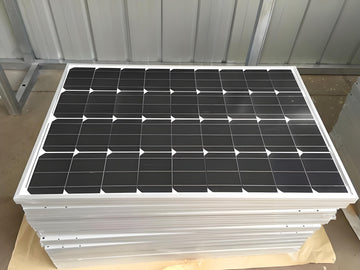Introduction
As the global demand for renewable energy continues to grow, solar energy, as a clean and renewable form of energy, has gained widespread attention and application. One of the core components of a solar system is the solar panel, which is responsible for converting solar energy into electricity. However, simply installing solar panels does not ensure the proper operation of a solar system; proper connections and testing are also required. In this article, the connection and testing process of solar panels will be described in detail to help readers better understand and operate the solar system.
Connecting solar panels
Preparation before connectionBefore making the connection of solar panels, it is necessary to make adequate preparations. First, make sure that all components such as solar panel, cables, connectors, brackets, etc. are ready and of reliable quality. Secondly, check whether the appearance of the solar panel is intact and free from defects such as breakage and cracks. Finally, confirm that the rated voltage, current and other parameters of the solar panel match the requirements of the system.
Connection Steps
(1) Mounting bracket: According to the size of the solar panel and the installation environment, choose a suitable bracket for installation. The bracket should be mounted firmly and be able to withstand the weight of the solar panel and external forces such as wind.
(2) Fixing the solar panel: Fix the solar panel on the bracket and make sure that the solar panel is tightly connected to the bracket without shaking.
(3) Connecting cables: Use special cables to connect the solar panels with inverters, batteries and other equipment. In the connection process, pay attention to the cable specifications, length and connection method to ensure a firm and reliable connection.
(4) Installation of connectors: Install connectors at the connection of cables to facilitate subsequent maintenance and replacement. The installation of the connector should follow the relevant safety standards to ensure that the connector's waterproof, dustproof and other performance requirements.
(5) Check the connection: After completing the connection, carefully check whether all the connections are firm and free of looseness. At the same time, use a multimeter and other tools to check the through and through situation of the cable to ensure that there is no damage to the cable, no short-circuit and other problems.
Precautions for connection
(1) During the connection process, follow the relevant safety regulations to ensure safe operation.(2) Avoid connecting in humid, dusty and other harsh environments to avoid affecting the quality of the connection.
(3) In the connection process, pay attention to the direction and layout of the cable to avoid excessive bending, pulling and other external forces on the cable.
(4) After the connection is completed, the site should be cleaned up in a timely manner to ensure that the installation environment is clean and free of debris.
Third, the test of solar panels
Preparation before testing
Before the test of solar panels, you need to make adequate preparations. First of all, ensure that the test equipment (such as multimeter, oscilloscope, etc.) has been prepared, and work properly. Secondly, understand the rated voltage, current and other parameters of the solar panel, so as to compare and analyze them in the testing process. Finally, choose a suitable test environment to ensure that the light, temperature and other conditions of the test environment are stable and reliable.
Test Steps
(1) Open-circuit voltage test: In the case that the solar panel is not connected to any load, use a multimeter to measure the open-circuit voltage of the solar panel. The open-circuit voltage should be close to the rated voltage of the solar panel, and the error is within the allowable range.
(2) Short-circuit current test: Measure the short-circuit current of the solar panel with a multimeter under the condition of short-circuit at both ends of the solar panel. The short-circuit current should be close to the rated current of the solar panel, and the error is within the allowable range.
(3) Maximum power point test: In the case that the solar panel is connected to an appropriate load (such as a resistance box), find the maximum power point of the solar panel by adjusting the size of the load. At the maximum power point, the output voltage and current of the solar panel should reach the best matching state, thus realizing the maximum energy output.
(4) Temperature coefficient test: Measure the open-circuit voltage and short-circuit current of the solar panel at different temperatures to evaluate the effect of temperature on the performance of the solar panel. The smaller the temperature coefficient, the more stable the performance of the solar panel.
(5) Long-term performance testing: long-term performance testing of solar panels to assess their performance and stability in actual use. Long-term performance tests include continuous operation performance tests, weather resistance tests, etc.
Test Precautions
(1) During the testing process, follow the relevant safety regulations to ensure safe operation.
(2) Before testing, it is necessary to fully understand the performance parameters and testing requirements of solar panels, so as to compare and analyze them in the testing process.
(3) During the testing process, pay attention to the stability of the testing environment to ensure the accuracy and reliability of the test results.
(4) After the test is completed, the test results should be recorded and analyzed in a timely manner so that the performance of solar panels can be evaluated and improved.

















